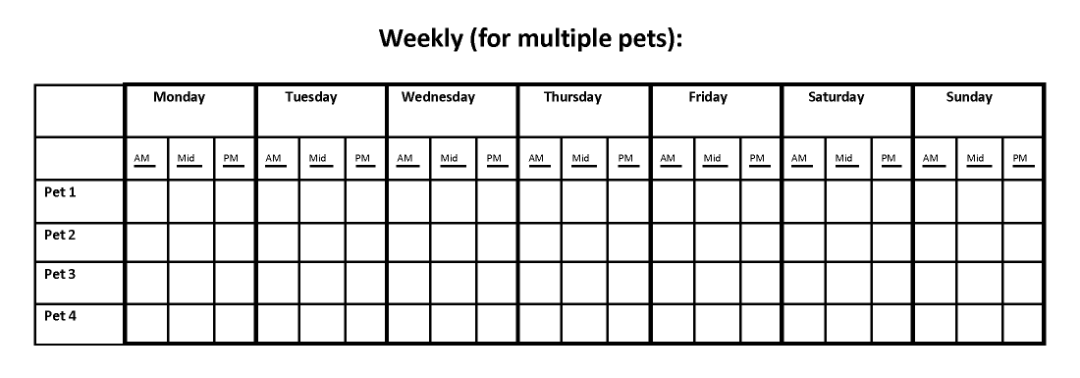
Frequently Asked Questions
Brewer’s Yeast, Liver, Cellulose, Stearic Acid, Silica, Thiamine HCl (Vitamin B-1), D-Calcium Pantothenate (Vitamin B-5), Pyridoxine HCl (Vitamin B-6), Folic Acid, Cyanocobalamin (Vitamin B-12).
YES! Given as directed, we guarantee the results! Just follow our chart below for recommended daily intake.
Pet Weight | Morning | Evening |
0-29 lb. | 1 tablet | 1 tablet |
30-69 lb. | 2 tablets | 1 tablet |
70+ lb. | 2+ tablets | 2+ tablets |
Present Flea Treats to your pet excitedly, as you do with any treat. To begin with, start with a couple of your pet’s favorite snacks, and toss in a Flea Treat. You can also break the tablet into smaller pieces or crush it into powder to sprinkle over food. Most pets love the real liver and eat them eagerly!
YES! The REAL LIVER in Flea Treats makes them irresistible to dogs and cats!
No – because they’re safe, Flea Treats are available without prescriptions or vet visits.
No – because B-vitamins are water-soluble, whatever can’t be metabolized flushes harmlessly through the pet’s system.
Flea Treats are good for your pet and shouldn’t interfere with any veterinary treatment, however, it’s always a good idea to check with your vet if you’re unsure.
If your pet has diabetes and is taking supplemental insulin, be sure to ask your veterinarian if the additional B-vitamins will affect the amount of insulin your pet requires.
Healthy skin, soft & shiny coats, and happy pets!
Yes – maintaining a constant level of B-vitamin in your pet’s system is essential. Read more below on the science of how Flea Treats work!
Flea Treats are an especially good choice for pets with allergies, for two reasons: 1) Flea Treats prevent the fleas from getting on your pet in the first place, and if the fleas aren’t on your pet they can’t bite to aggravate the allergy. 2) Flea Treats contain B-vitamins, which helps promote healthy skin and coats. Once the pet isn’t being bitten anymore, they’ll go to work to help heal that irritated skin. Some of our most devoted customers have pets with allergies to fleas.
No, neither you nor your pet will notice an odor. Fleas and ticks can smell it, though, and they don’t like.
2-3 weeks is typical for most pets.
No, with Flea Treats the fleas simply won’t get on your pet in the first place.
Though we developed Flea Treats to repel fleas, many customers reported effectiveness against ticks as well. So much so, that in 1997 we extended our original satisfaction guaranty to include both fleas and ticks.
Yes, Flea Treats are a great choice for an aging pet! If dentally challenged, Flea Treats are easily crushed and sprinkled over food.
Yes! Flea Treats are not only safe for pregnant and nursing dogs and cats, they’re good for them. See below for recommended daily intake.
Yes, Flea Treats are safe and can be given to puppies and kittens as soon as they are weaned.
We offer a money-back guarantee. Use up a bottle of Flea Treats. If you’re not pleased with what we’ve done for your pet, send the empty bottle back to us (our address is right on the label) and we’ll refund your money. We think you’ll be pleased, though. [Refund limited to one (1) returned bottle per customer.]


Flea Treats Facts
When given as directed, Flea Treats cause your pet’s skin to emit a powerful odor that fleas don’t like. The odor is emitted by the skin cells themselves. The skin cells manufactured by your pet, once you’ve started feeding the Flea Treats, must work their way to the surface of your pet’s skin. That’s why it takes a little time for the Flea Treats to start working. Flea Treats contain water soluble vitamins that are not stored in your pet’s system. No matter what kind of pet you have, please remember that Flea Treats must be given daily as directed for maximum effectiveness. Maintaining the vitamin level in your pet is the key to success!
Pet Weight | Morning | Evening |
0-29 lb. | 1 tablet | 1 tablet |
30-69 lb. | 2 tablets | 1 tablet |
70+ lb. | 2+ tablets | 2+ tablets |
Due to their higher metabolic rates and smaller bladders, puppies and kittens require larger doses than adult pets. We recommend adding an afternoon dose to maintain a constant level of vitamins.
Pregnant and nursing pets may also receive a larger dose. Double the dose during the final 2-weeks of pregnancy, continuing until the litter is weaned. While they’re nursing, B-vitamins will pass through the mother’s breast milk to protect the litter. Once the puppies or kittens are weaned, they may be given their own Flea Treats.
Pets with problem skin, hot spots, hair loss, or other symptoms of allergic reactions to flea bites benefit from a double dose during the first few weeks of using Flea Treats. The additional B-vitamins will aid in the recovery of the affected areas. Once you notice improvement in scratching and itching, begin to decrease their dosage at a rate of 1 tablet every 4 to 5 days until the maintenance dosage is reached. At any step of the way, should the itching and scratching return, increase the dosage to the previous level and maintain the pet at that level.
Active pets often require a larger dosage than less active pets of the same size.
Set Yourself Up For Success
It’s important to give Flea Treats as recommended for them to work properly. As you and your pet get started with your Flea Treats routine, it’s helpful to set a reminder so no dose is missed. Handy sample charts are found at the bottom of the page.
Some customers report that they keep the bottle of Flea Treats in the pet food bag or container.
Depending on the severity of your flea problem, we suggest the following methods:
- Use a flea comb. Daily combing will remove fleas from your pet. This method is safe for all animals.
- Give your pet a bath. Any soapy water will kill fleas.
- Vacuum frequently. In general, vacuuming is the safest way to remove the occasional flea that may hitchhike into your home on you or a visitor.
- Treat infested areas with diatomaceous earth.
The life cycle of fleas can vary widely. The entire life cycle can be as quick as two weeks or as long as a few years!
Stage 1: EGGS
Flea eggs hatch between 2 and 14 days. They are deposited in your pet’s fur and fall onto the floor, rugs, bedding, pet furniture, etc. as your pet moves.
Stage 2: LARVAE
The larval stage lasts between 5 to 20 days, depending on the environment. When mature, the larvae spin cocoons, leading to the next stage…
Stage 3: PUPAE
The adult flea can emerge from its cocoon in as little as 3 to 5 days. If the environment is not favorable, they can lay dormant in this stage for months or even years!
Stage 4: ADULT
Adult fleas live on your pet – their diet consists of blood. They will breed and begin laying eggs within a few days of their first meal. Each adult female can lay up to 500 eggs in her lifetime! Adult fleas can live anywhere from a couple weeks to several months on the host animal.
Understanding the flea life cycle will help eliminate an infestation, and prevent new ones in the future. Be consistent, and you will prevail!

SAMPLE CHARTS

Monthly (for one pet):
| Monday | Tuesday | Wednesday | Thursday | Friday | Saturday | Sunday | |||||||||||||||
| AM | Mid | PM | AM | Mid | PM | AM | Mid | PM | AM | Mid | PM | AM | Mid | PM | AM | Mid | PM | AM | Mid | PM | |
| Week 1 | |||||||||||||||||||||
| Week 2 | |||||||||||||||||||||
| Week 3 | |||||||||||||||||||||
| Week 4 | |||||||||||||||||||||


Weekly (for multiple pets):
Monday | Tuesday | Wednesday | Thursday | Friday | Saturday | Sunday | |||||||||||||||
AM | Mid | PM | AM | Mid | PM | AM | Mid | PM | AM | Mid | PM | AM | Mid | PM | AM | Mid | PM | AM | Mid | PM | |
Pet 1 | |||||||||||||||||||||
Pet 2 | |||||||||||||||||||||
Pet 3 | |||||||||||||||||||||
Pet 4 | |||||||||||||||||||||
